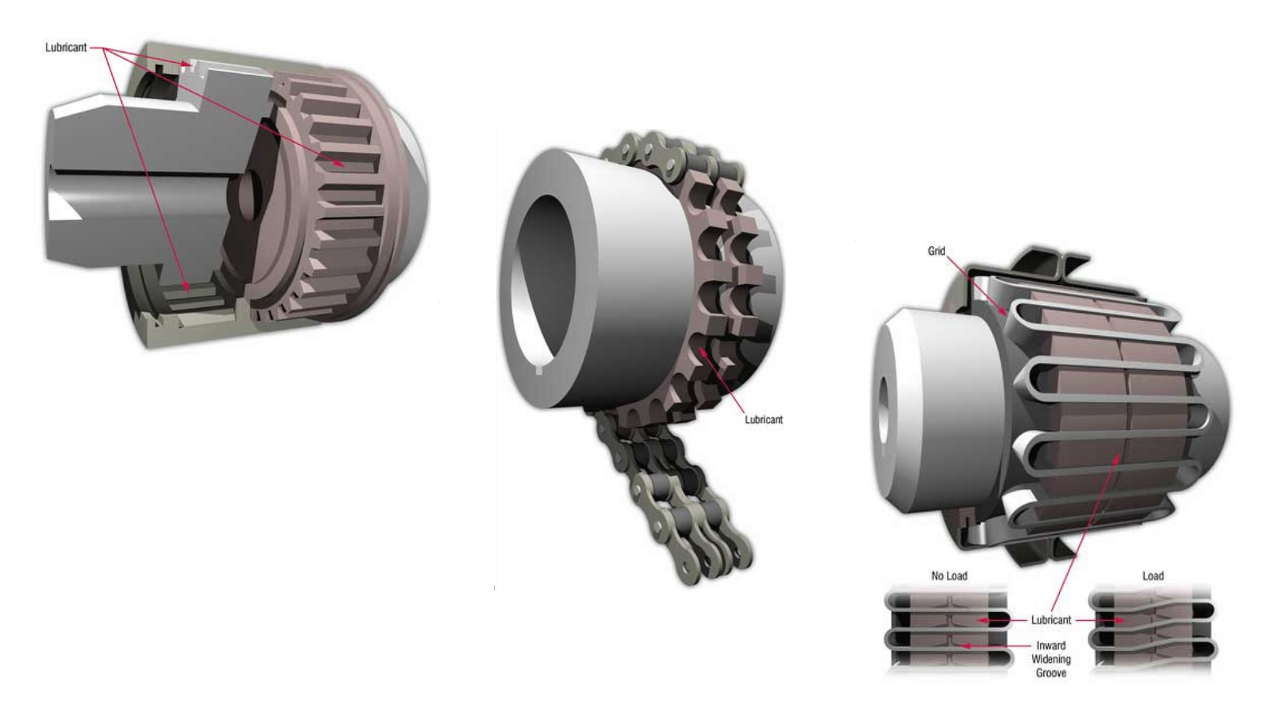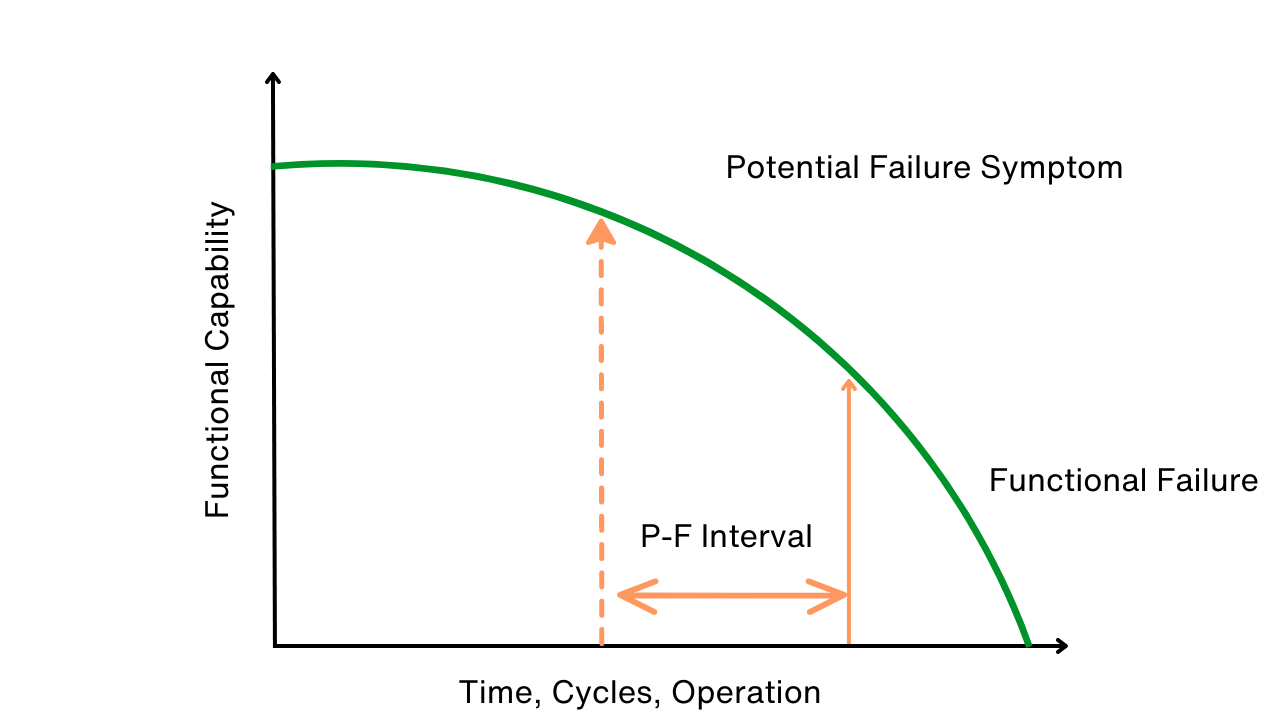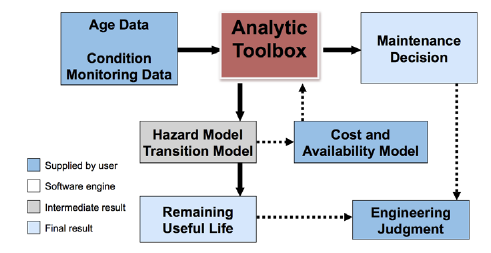Evidence. Based Asset Management: Actionable Intelligence in the Era of Big Data
Dr. Andrew K.S. Jardine, Dr. Elizabeth Thompson, and Ali Zuashkiani, University of Toronto
In Evidence Based Asset Management (EBAM), theory and practice are joined to produce accurate outputs from statistical data and/or tacit knowledge through a process that includes state-of-the-art mathematical and statistical techniques that analyze, clean and process data. With data and knowing how to use it, maintenance managers can improve their standard maintenance practices.
To see how this works, consider what happens with original equipment manufacturer (OEM) recommendations in the real world. Manufacturers suggest the appropriate maintenance activities for an asset and it might seem logical to simply do as advised. However, these are often generic guidelines rather than case-specific instructions. For one thing, they do not consider the effect of a specific operating environment on the asset. Fortunately, companies with rich data will have access to this kind of information (e.g., weather or the conditions in which equipment is used and the consequences of failures of the asset in its current operating context) and by applying Evidence Based Asset Management, they can modify the OEM’s recommendations to suit their needs. In other words, the data is there if a company opts to look for and use it.
Applying principles of Evidence Based Asset Management to asset management decisions generates huge savings for companies, up to tens of millions of dollars annually 4,7. Such decisions include: finding the optimum retirement ages of expensive assets; calculating optimum inspection frequencies for protective devices; establishing the most economical preventive replacement intervals for critical components; buying expensive spare parts in the right quantity; determining the best repair versus replacement decision policy; and making optimum condition-based maintenance decisions. Four key decision areas are:
- Lifecycle costing decisions;
- Maintenance tactics, such as preventive replacement strategies;
- Inspection policies, such as predictive maintenance and failure finding intervals;
- Resource requirements, such as establishing maintenance crew sizes.
Of course, even ample data may be incorrectly used. The data or evidence alone will not create a solution and with missing or incomplete data, the problem is much greater. In short, Evidence Based Asset Management tools are necessary to ensure optimal decision-making. The Centre for Maintenance Optimization and Reliability Engineering (C-MORE) at the University of Toronto has been leading the way in this type of research, developing software tools to help predict reliability and optimize condition-based maintenance. One such software tool is used to predict equipment failure, estimate the remaining useful life of equipment and define the optimal mix of preventive maintenance and run to failure in order to optimize costs and reliability, and achieve the optimum risk/cost/reliability balance. A basic schema of the software principle is shown in Figure 1.
Figure 1: Analytic tool
Another option is a decision support tool for setting inventory levels for critical, slow-moving and high cost parts. This system forecasts inventory levels for in-house repair, subcontract repair and new purchases based on the required reliability, cost and equipment availability, and combining science and economics to set inventory levels according to operations and performance needs, not just budgets. A third software can be used to find the optimal replacement policy for assets.
Over the past 20 years, C-MORE has worked with a wide variety of companies around the world on a multitude of projects. Companies include transit, energy, pulp and paper, mining, etc. Past projects have determined: the economic life of a bus fleet; the optimum replacement age for underground steel mains; whether to repair or replace a gas meter; the optimal number of spare repairable electric motors to stock for a conveyor system in a mine; and an optimal inspection schedule with respect to availability for a mine’s fleet of safety pressure valves, etc. Two ongoing projects demonstrate the applicability of Evidence Based Asset Management across the maintenance spectrum. The first considers the optimal inspection frequency for medical devices, while the second is working on a scheduling problem with Bombardier Aerospace.
Inspection Frequency for Medical Devices
Hospitals deal with a large number of devices and depend on periodic inspections to ensure these devices are safe and reliable. Most follow the manufacturer’s recommendations for inspection and maintenance, but as previously mentioned, these are not necessarily the best possible practices in their specific operating context. Dr. Sharareh Taghipour, formerly with C-MORE and now with Ryerson University, and Dr. Dragan Banjevic with C-MORE, developed a model to determine the optimal inspection interval for such medical devices. Taghipour and Banjevic are trying to close the gap between optimal and actual practices in periodic inspection of repairable systems by using available data, formulating models that best describe the data and recommending evidence-based policies based on the outcomes of the models.
Maintenance Scheduling
Bombardier’s Dr. Nima Safaei, formerly with C-MORE, has been working on a maintenance scheduling problem for Bombardier aircraft. He is trying to determine the schedule of preventive/corrective maintenance jobs (i.e., the sequence in which the maintenance jobs should be executed) during a short planning horizon, considering the available resources. Scheduling is essentially short-term decision-making, so encountering limited resources, such as skilled workforce, facility time capacity, tools, space and spare parts, is common. In the maintenance management field, the workforce is considered the highest priority resource because maintenance jobs are labor-intensive and the workforce performing these jobs is highly paid and extremely skilled in their area. Because of the nature of the problem, most companies encounter conflicting objectives. One objective is workforce cost/requirement minimization. Workforce costs include employment, subcontracting, training and transportation costs. Other objectives may be equipment/asset availability maximization, turnaround minimization, weighted completion time minimization, etc. A set of non-dominated alternative solutions addressing the trade-off between the workforce cost/requirement and other considered conflicting objectives are central to better decision-making. Safaei has formulated the problem as a mixed-integer mathematical programming model in which the network flow structure is used to simulate the flow of an aircraft between missions, hangar and repair shop. The model’s validity can be tested using data from the company.
Conclusion
Evidence-based asset management is more than just a number obtained at the end of data analysis. It is a process asset managers can use to defend their decisions through the proper collection and analysis of data and the appropriate selection of decision criteria. The process comprises the following steps:
- Clearly identify the problem;
- Consider the optimization criteria (i.e., what the company hopes to achieve);
- Define a model;
- Extract data, including tacit data;
- Validate/revise the model;
- Solve the final model;
- Conduct proper sensitivity analysis of the recommended decision with respect to the model’s key parameters;
- Recommend an asset management decision.
C-MORE researchers have barely scratched the surface of the kinds of practical asset management problems that could benefit from the EBAM application. Optimizing asset management decisions covers component replacement, including the choice of optimal replacement time and spare parts provisioning. Evidence Based Asset Management addresses inspection decisions, including optimizing condition-based maintenance, inspection frequencies for a system and failure finding intervals for protective devices. Other main areas are capital equipment replacement decisions, maintenance resources requirements and scheduling.
References
- Davenport, T. “Competing on Analytics.” Harvard Business Review January 2006: 99-107.
- Jardine, A.K.S. “Evidence-Based Asset Management.” Maintenance Technology December 2008:56.
- Jardine, A.K.S., and Montgomery, N. “Optimal Maintenance Decisions for Asset Managers.” Industrial Engineer, Vol. 41, No. 6, June 2009.
- Mathisen, H. “Spare Necessities: Parts Stocking Software Saves Teck Resources Millions.” CIM Magazine, Vol. 8, No. 2, 2013: 40-41.
- Safaei, N.; Banjevic, D.; and Jardine, A.K.S. “Workforce Constrained Maintenance Scheduling for Military Aircraft Fleet.” Annals of Operations Research, May 2011: 295-316.
- Taghipour, S. and Banjevic, D. “Optimum Inspection Interval for a System under Periodic and Evidence-Based Asset Management,” IIE Transactions Vol. 44, No. 11 (2012): 932–948.
- Zuaskiani, A. “Evidence-Based Asset Management.” Uptime – Strategies for Excellence in Maintenance Management, 3rd Edition, CRC Press, 2015: 331-363.

Dr. Andrew K.S. Jardine
Dr. Andrew K.S. Jardine, Ph.D., C.Eng., M.I.Mech.E., M.I.E.T., P.Eng. FCAE, FIIE, FISEAM (Hon.), is the Founding Director of the Centre for Maintenance Optimization and Reliability Engineering (C-MORE) at the University of Toronto. He is the author of Maintenance, Replacement and Reliability, co-editor of Maintenance Excellence: Optimizing Equipment Life Cycle Decisions and his most recent book, Maintenance, Replacement & Reliability: Theory and Applications. Dr. Jardine has carried out innumerable consulting assignments with organizations around the world, including mines, government agencies, power and transit companies.

Elizabeth Thompson
Elizabeth Thompson has worked for Professor Andrew Jardine at his C-MORE lab for the past six years. Dr. Thompson has a doctorate in English Literature from the University of Western Ontario and runs her own editing company, working primarily on academic manuscripts.

Ali Zuashkiani
Ali Zuashkiani is the Director of Educational Programs at the Centre for Maintenance Optimization and Reliability Engineering (C-MORE) at the University of Toronto. He is the author of Expert Knowledge Based Reliability Models and a sought after expert in the field of asset management and reliability engineering. In 2013, World Economic Forum selected Ali as a Young Global Leader based on his professional and leadership achievements.
Related Articles

Keys for Effective Troubleshooting
Analyzing Semiconductor Failure

The Lubrication Requirements of Couplings

What is the True Downtime Cost (TDC)?

Improvement: What Comes First?

Use P-F Intervals to Map, Avert Failures





